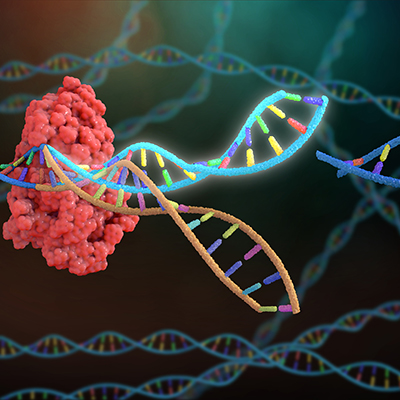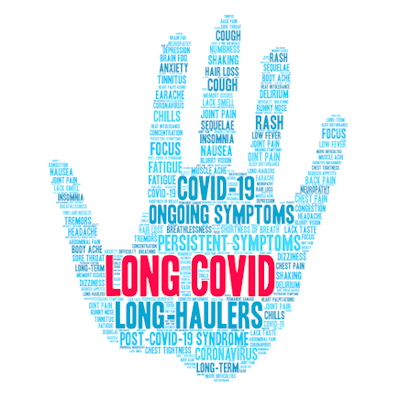 Researchers map RNA to inform selection of stem cells for therapeutic applications
Researchers map RNA to inform selection of stem cells for therapeutic applications
Creating maps of the RNA inside cells could improve cell therapies by enabling the isolation of subsets of cells with similar characteristics, according to a study published Friday in Cell Reports Methods. Read More
 NIH launches investigation of somatic mosaicism in human cells and tissues
NIH launches investigation of somatic mosaicism in human cells and tissues
The National Institutes of Health (NIH) recently launched a new program: the Common Fund’s Somatic Mosaicism Across Human Tissues (SMaHT) Network. The program, with planned awards totaling $140 million over five years, aims to enhance knowledge of how much genetic variation exists within normal human cells and tissues throughout the body. Read More
 CRISPR technique cuts time to develop mouse models with any cancer-causing gene
CRISPR technique cuts time to develop mouse models with any cancer-causing gene
A CRISPR-based technique has cut the time it takes to create mouse models with mutations that cause cancer, making it easier to show the effects of genetic changes linked to tumor development. Read More
 Researchers pitch cytokine-antibody complex as treatment for respiratory infections
Researchers pitch cytokine-antibody complex as treatment for respiratory infections
Researchers have combined a cytokine and an antibody to generate inflammatory responses against viruses while minimizing tissue damage. Read More
 Alzheimer’s drug could prevent damage to the brain
Alzheimer’s drug could prevent damage to the brain
Researchers showed that tiny aggregates of amyloid beta protein, a naturally occurring substance associated with Alzheimer’s disease progression, can float freely through brain tissue fluid, reaching important brain regions and disrupting local neuron functioning. The research, published Wednesday in the journal Neuron, also indicated that a newly-approved Alzheimer’s disease treatment could neutralize these tiny aggregates, also known as protofibrils or oligomers. Read More
 A closer look at long COVID symptoms
A closer look at long COVID symptoms
Patients with persistent neurological symptoms after SARS-CoV-2 infections were intensively studied and found to have autonomic dysfunction and differences in their immune cell profiles. The findings, published last Friday in Neurology: Neuroimmunology & Neuroinflammation, may help explain lingering long-COVID neurological symptoms, and lead to better diagnoses and treatments. Read More
 Discovery of markers on long-lasting immune cells lights way to more durable vaccine responses
Discovery of markers on long-lasting immune cells lights way to more durable vaccine responses
Researchers have identified surface markers on cells that continue producing antibodies for a long time, pointing to a way to improve the duration of response to vaccines. Read More
 Pfizer, Thermo Fisher Scientific collaborate to broaden access to NGS testing in underserved countries
Pfizer, Thermo Fisher Scientific collaborate to broaden access to NGS testing in underserved countries
Pfizer and Thermo Fisher Scientific on Tuesday announced they have entered into a collaboration agreement to help increase local access to next-generation sequencing (NGS)-based testing for lung and breast cancer patients in more than 30 countries. Read More
 Calculator identifies myeloma patients with favorable prognoses
Calculator identifies myeloma patients with favorable prognoses
Researchers have developed a calculator tool that identifies patients with more benign forms of two blood cancers: multiple myeloma and primary amyloidosis. Their research, published in the Journal of Clinical Oncology, indicates that the tool could become part of the diagnostic workup of such patients, and help individualize their treatments. Read More
 Getting to know the Association of Biomolecular Resource Facilities (ABRF)
Getting to know the Association of Biomolecular Resource Facilities (ABRF)
The Association of Biomolecular Resource Facilities (ABRF) will hold its Annual Meeting May 7 to May 10 in Boston. ABRF is a membership organization that brings together Core facilities across the U.S. and supports more than 2,400 members at over 400 institutions including organizations in government, academia, research, industry, and commercial settings. Over 50% of its members define their area of professional responsibility as either genomics or core administration. Read More
Conferences
Science Briefs
Member Rewards
Earn points for contributing to market research. Redeem your points for merchandise, travel, or even to help your favorite charity.
Research Topics
Interact with an engaged, global community of your peers who come together to discuss their work and opportunities.
Connect
Tweets by @ScienceBoard






